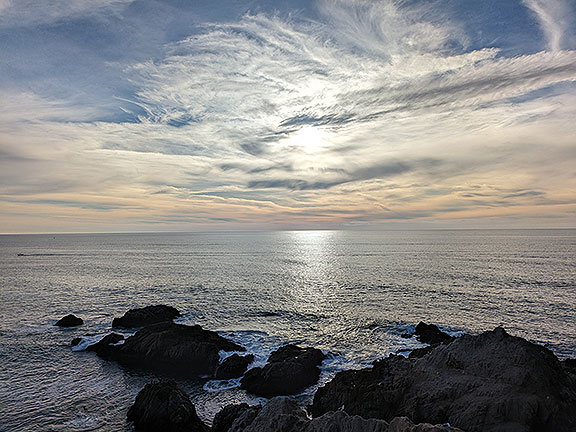
Sunset at Bodega Head, December 13, 2023.
That sounds a bit ambitious, maybe even pretentious. It’s about to be 2024. As I get older, the passing of years accelerates and I sometimes wish there were a way to slow it down a bit. I had a wonderful year celebrating Shaping San Francisco’s 25th anniversary with two dozen community partners and friends, finishing and publishing my second novel When Shells Crumble, and spent another wonderful and fulfilling year with Adriana, had a lot of time with my granddaughters… All this goodness in my life is obviously in sharp contrast to the horrors of Israel’s genocidal war against the Palestinians in Gaza, the ongoing meatgrinder in eastern Ukraine, the lesser known and underreported mayhem and slaughter in the eastern Congo, in Sudan, in Somalia, in Yemen, it just goes on and on. People living in the U.S. are sheltered from these horrors, even as our tax dollars finance most of them. The Biden administration has proven to be an old-school hawkish, war-mongering Democrat, juicing the military-industrial complex at every opportunity.
Fuck them! And we’re supposed to rally around the octogenarian out of fear of Trump? I can’t believe Trump can win any national election. But I can’t believe Biden can either. What a weird world! My novel dispensed with this by fast-forwarding the beginning to a year from now, when the Supreme Court hands the next election to the Republicans… but neither Biden nor Trump are in the mix. And trouble begins anyway. You’ll have to read the book!
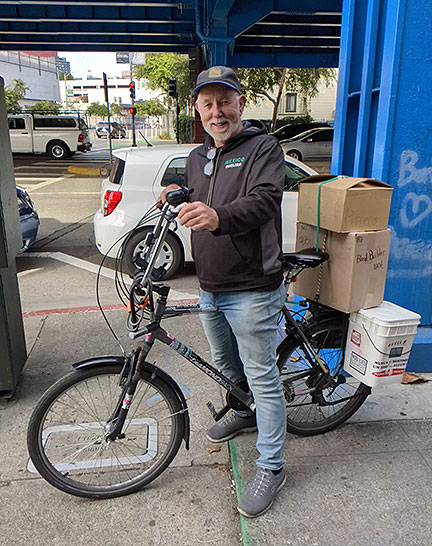
My weekly food shopping, first the Farmers’ Market and then Rainbow Grocery Cooperative. Not unusual to have 50-75 lbs of food loaded on the bike for the final push up Folsom Street.
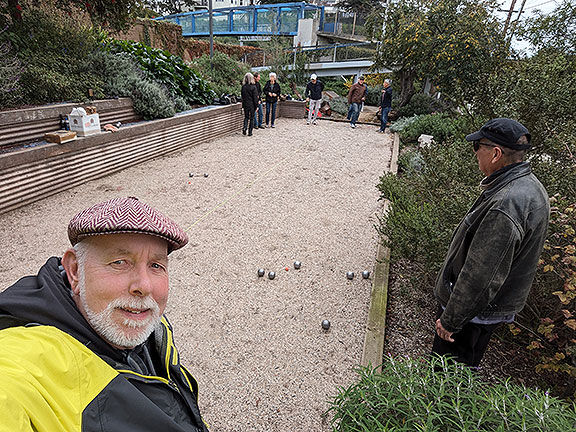
Monday afternoons at the Utah Commons playing petanque. Made some good friends here and really enjoy my weekly “play time!”
I’ve been away from my forlorn corner of the internet here for a few months. My blog is increasingly hard to find (facebook’s new algorithms suppressing news and opinions that appear outside of their walled garden is the long-expected closure of that as a useful place to amplify my work). Blogs in general have been pretty thoroughly eclipsed, unless you’re posting daily and getting paid by some larger entity to fill up the space. I appreciate the hardy 100-200 folks who still meander by once in a while to see if there’s anything new or worth checking out. I do have a lot of books to talk about in the next months, but we’ll see. My motivation to write is a bit low. I’m forcing myself to sit and write this post, just to get a last one in under the line of 2023. Yeah, yeah, arbitrary silliness, I know.
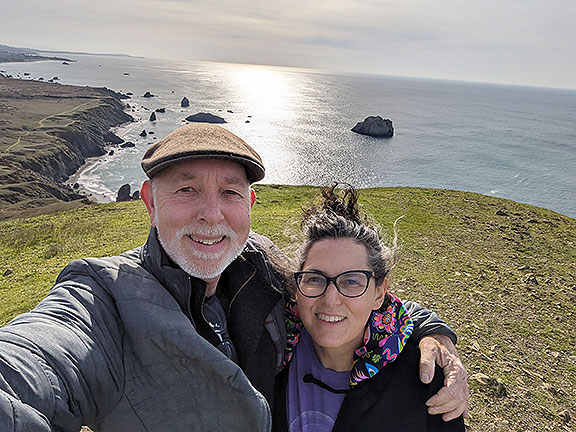
Birthday getaway selfies!
Anyway, Adriana and I went north for a short vacay to belatedly celebrate her late November birthday. We went to Bodega Bay and had a spectacular time on Bodega Head for sunset on the first day, then spent most of the second day walking back and forth on the Kortum Trail on the coastal plain, from Shell Beach to Goat Rock, with stops at the Mammoth rock outcropping (where Mammoths apparently smoothed the surface by rubbing against them across centuries) and to observe the subsiding cliffs where they are slowly collapsing into the ocean.
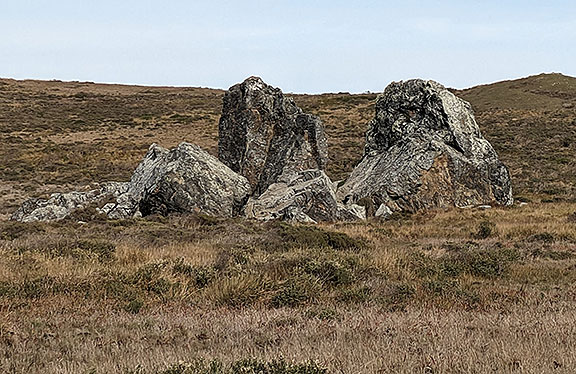
Mammoth rocks, rubbed smooth by centuries of mammoths…. I hope that’s true!
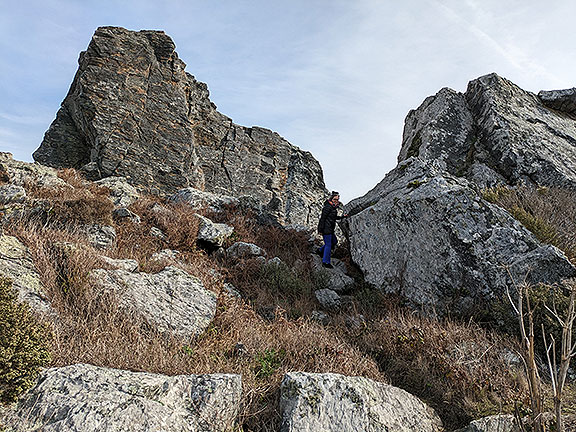
When you get close up they’re huge!
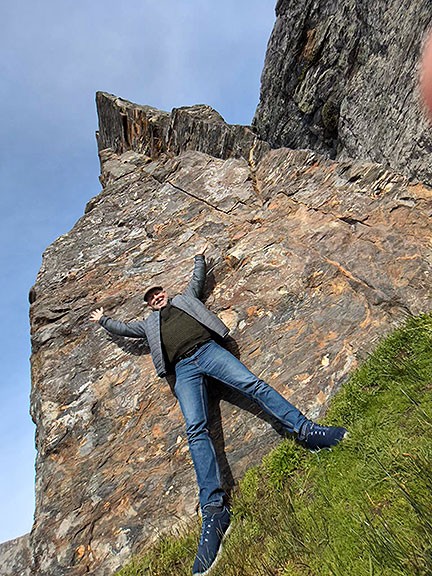
Inside the “den” of Mammoth Rocks.
My readings lately took me on a long, winding trail across the Pacific and back again. I found a book called Pacific Worlds: A History of Seas, Peoples, and Cultures (Cambridge University Press: 2012) by Matt K. Matsuda to be an incredibly useful overview of the complicated histories of the vast cultures that occupied the Pacific Islands going back thousands of years before the Europeans even knew there was a Pacific Ocean. But his book does such a great job in part because you not only get this long deep history, but then you also get the more recent stories of two centuries of colonialism, Christianity, and eventually World War II and post-war decolonial struggles.
Then I read Rosanna Xia’s new book California Against the Sea: Visions for our Vanishing Coastline (Heyday Books: 2023). She’s done a lot of media appearances and her book is well worth a read if you haven’t checked it out yet. A lot of detailed accounts from different spots along the long California coast, where the sensible policy of “managed retreat” has become unspeakable. Locations like Pacifica have erupted in crazy fights between home owners desperate to hold on to the value of their homes against the inexorable advance of the ocean, and those who see the inevitable and are trying to adapt intelligently. In Gleason, a small cluster of houses and farms 10 minutes north of Bodega Bay on the coast highway, a new bridge has just opened that Xia described in her book:
The concrete bridge (a monstrous overpass or a reasonable compromise, depending on who’s talking) will at least allow Scott Creek to flow freely into the ocean again—making room for more red-leged frogs, Myrtle’s silverspot butterflies, and the passage of steelhead trout and coho salmon. Officials reasoned that elevating the highway would avoid paving over what’s left of the wetlands, which were already in desperate need of healing. By rerouting traffic onto a bridge, these drowning habitats would have the space to recover and migrate inland as the sea moved in.
State transportation officials also agreed, as part of the $73 million project. To pay $5 million to help clean up the mess of abandoned homes and failed road repairs. An additional $6.5 million will go toward wetland creek, and prairie restoration. Some of the old highway will be reconverted into a public coastal trail, and visitors will have access to a new parking area, as well as a beach that was once limited by private property. (p. 272)
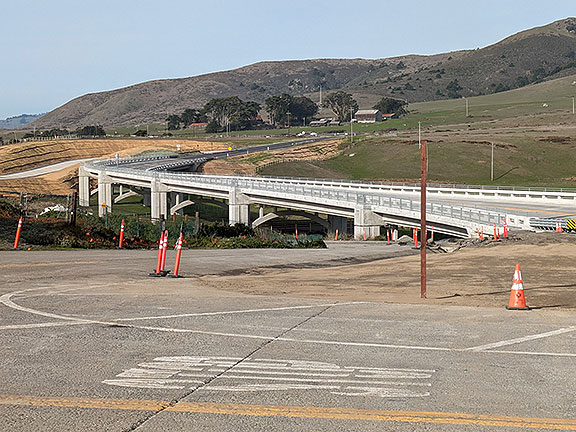
When Xia was writing the bridge wasn’t built yet, but here it is, just recently completed over Scotty Creek, and rerouting Highway 1 away from the sea.
Adriana and I both love the shoreline, walking on the beach, or taking in the spectacular views along the coast. Reading Xia’s book got me curious about a “sustainable” hotel/resort in undisturbed dunescape near Cal State University Monterey Bay, but the place was so expensive that I turned north and we settled on a more modest motel in Bodega Bay. The motel was nothing special, but it gave us a good launching pad to take walks and enjoy the scenery. After reading Xia and seeing in her acknowledgements David Helvarg’s book The Golden Shore: California’s Love Affair with the Sea (St. Martin’s Press: 2013) I plucked the long-unread volume from my burgeoning shelves and finally devoured it. Another fine contribution to the lore of our state. Helvarg is a sailor and a surfer among other things, and he has a palpable joy at doing things in the ocean that I simply do not have. He also gets to ride with Coast Guard cutters on rescue missions, check all manor of businesses along the coast, and manages to include a great deal of good history as well.
As we were in Bodega Bay and I’d read recently about the precipitous slaughter of the sea otters in the late 1700s and early 1800s, his book recounts some of the same history: “In 1809 the Russians led an expedition to Bodega Bay sixty-eight miles north of San Francisco where they killed and skinned 2,000 otters. The following year two U.S. vessels collected 7,000 pelts. In 1811 close to 10,000 were taken from California waters.” (p. 46). We looked and looked for wildlife offshore and ended up joking about the “Great Whale Hoax” because over two sunny warm days in mid-December we didn’t see a single spout or fluke out in the vast ocean we stared at for long periods of time. There are supposedly thousands of California Gray Whales and Humpbacks migrating south from November to March… harumph! We did see seals gracefully looping out of the water like dolphins and making their way around Bodega Head. We also came upon a healthy group of sea lions who had parked themselves on the pier by a restaurant, underneath a whole history plaque explaining the rare “whale pot” that they had on display. Some pleasant irony to imagine sea lions having the run of the place when 150 years ago they would have been shot and turned into oil themselves, or at least food!
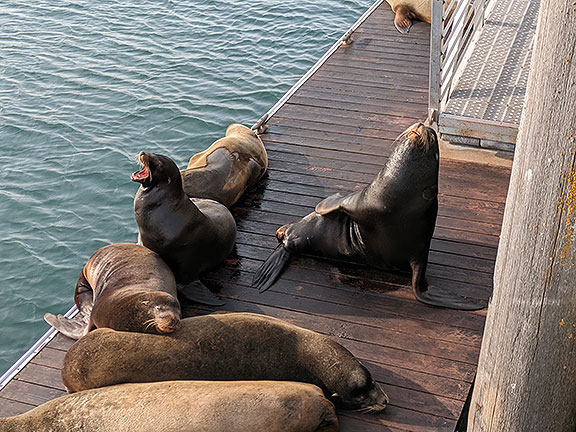
Sea lions on the pier at Bodega Bay, enjoying their legal protection!
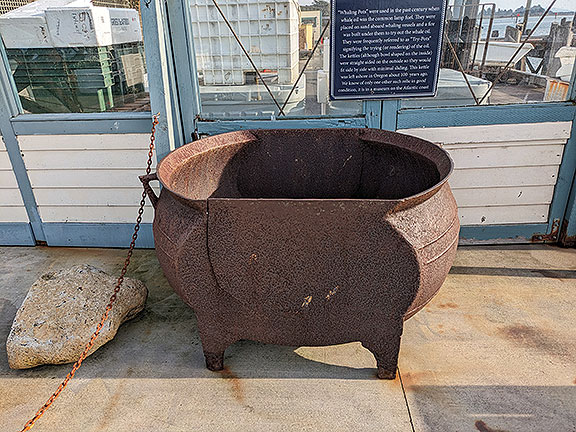
The Whale Pot, where whale blubber was cooked (or “tried”) into oil which was used extensively for illumination and lubrication before we moved on to petroleum and redirected oil wars towards other humans rather than other mammals.
So it’s photos the rest of the way… enjoy!
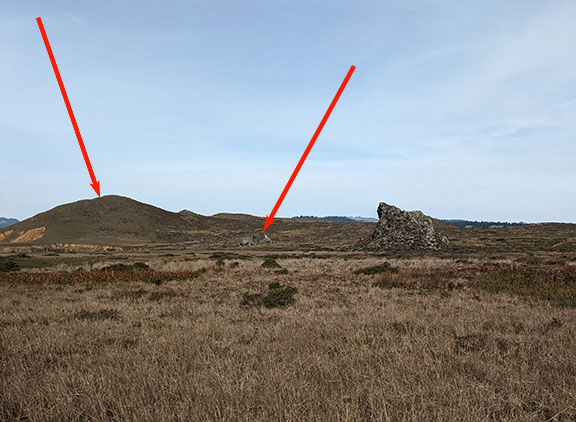
The right-hand red arrow points to the Mammoth rocks seen above. The left-hand arrow points to Goat Rock where the following vistas were taken.
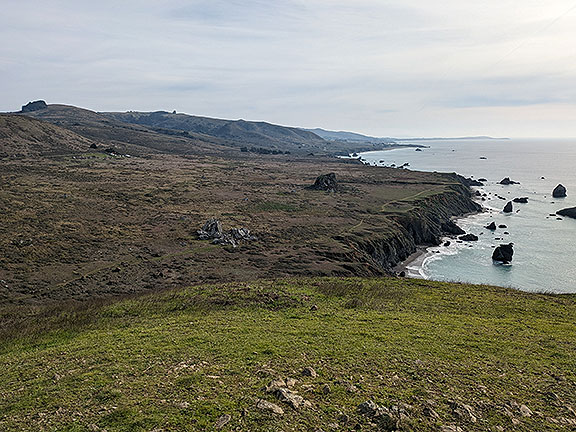
View south from Goat Hill.
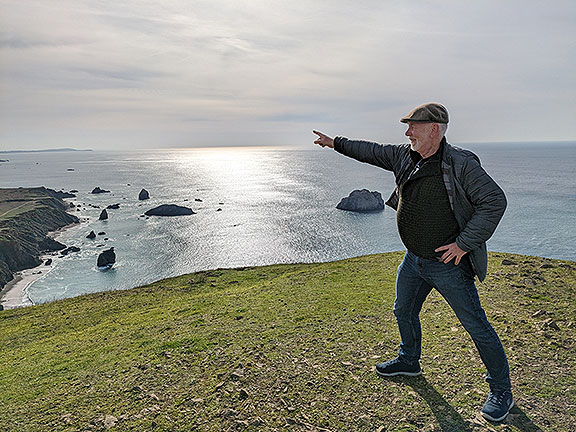
Go west? Or follow that Whale!
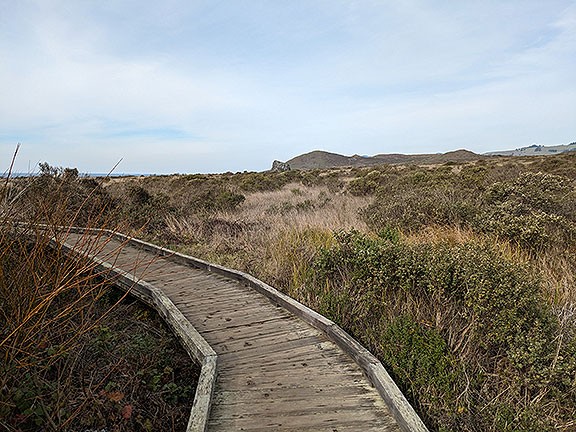
Here’s the boardwalk part of the Bill Kortum Sonoma Coast trail. That modest hump in the middle distance is the towering Goat Rock!
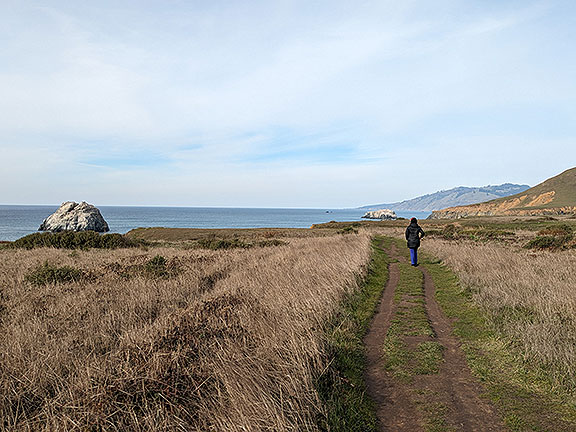
Strolling along the coastal plain looking north.
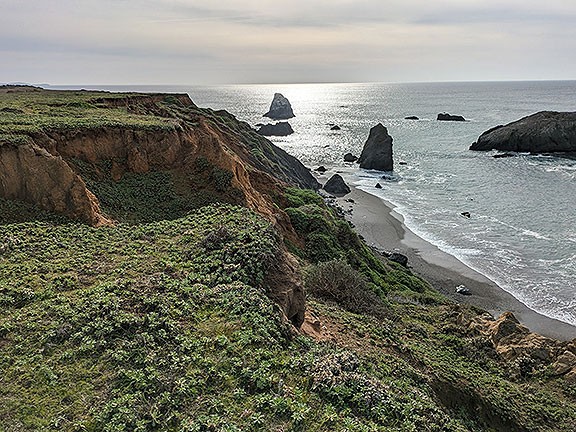
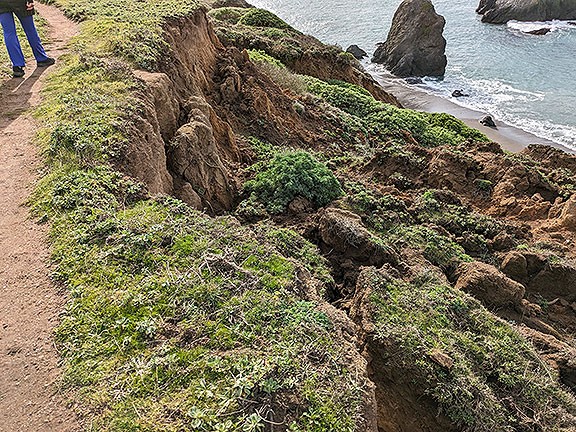
Noticeable subsidence going on, perfectly normal, but likely to accelerate up and down the coast with rising seas and climate drama.
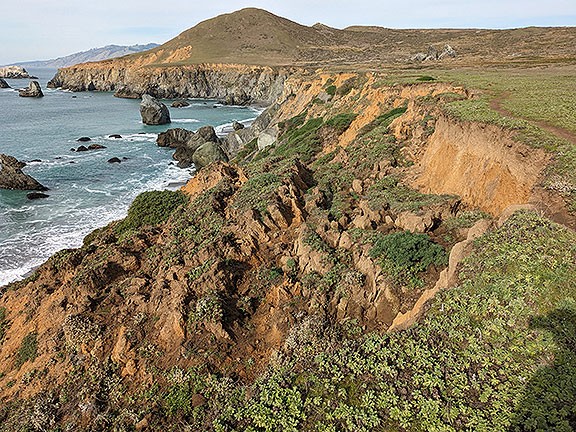
A view back at subsidence.
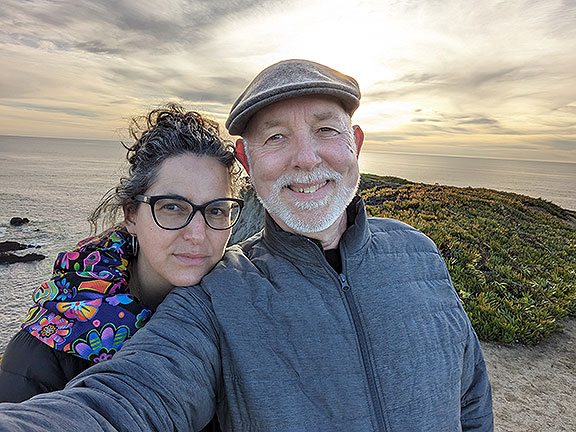
Bodega Head selfie












Thanks Chris!
Always a pleasure. I am loving your latest book. So deeply personal, alarming and hopeful.
Happy New Year!
Meg
Chris thanks for your blog love it a lot happy new year